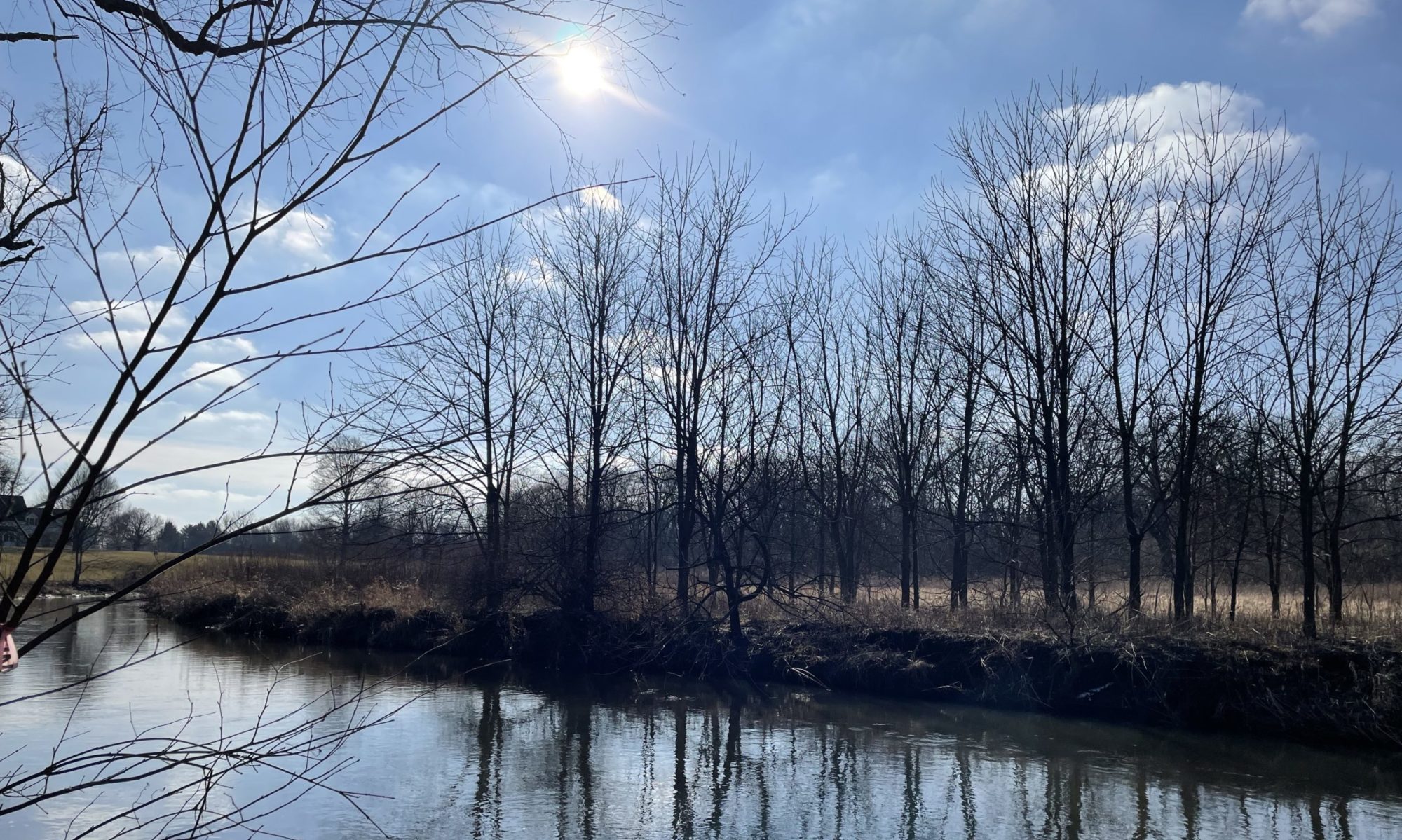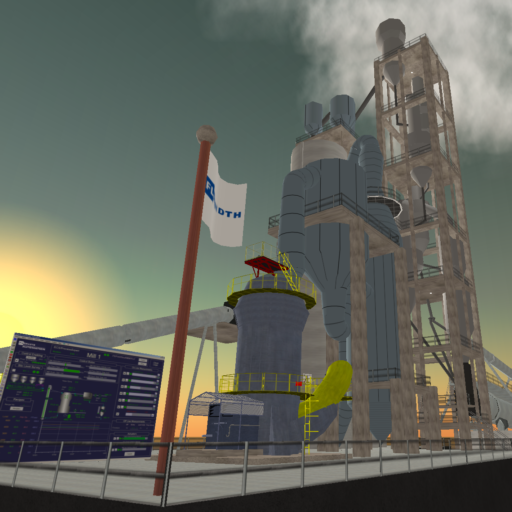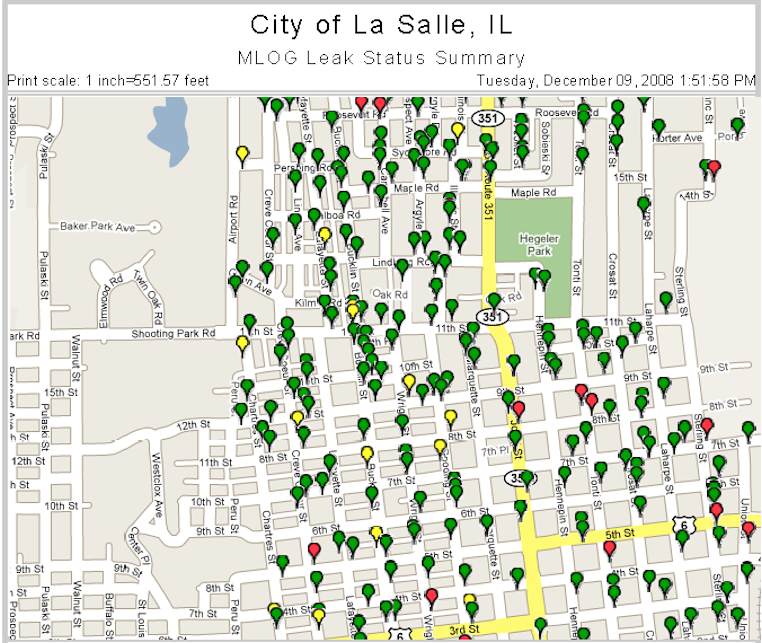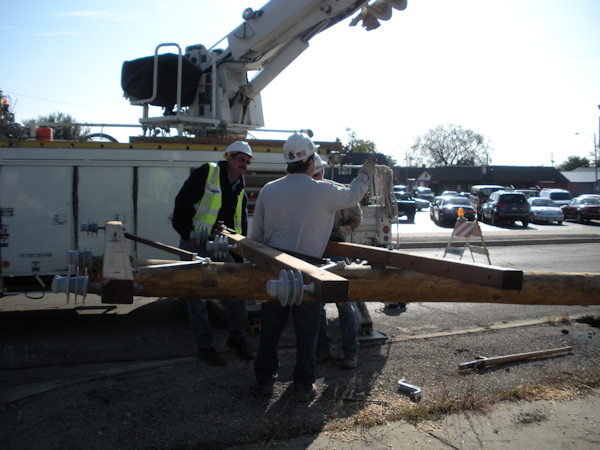A water meter usually sits in a basement or crawlspace off in a corner, forgotten, and often ignored. But when temperatures start to dip below 0° F, and the water in the meter freezes because no one thought to keep their meter nice and toasty warm, this water measuring device starts to get a little recognition. Unfortunately for our city, we have had several water meters freeze and break this season. So the other day, T.J., our Neptune water meter sales guy, showed up to bestow some of his water meter wisdom upon us. I found this information fascinating since up to now no one had ever explained to me how meters respond when frozen. Thinking there might be others interested in frozen water meters (I know it’s a long shot), I decided to share what I learned with all of you.
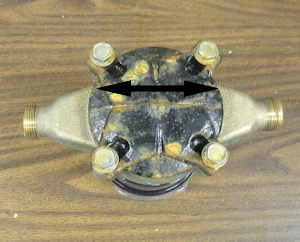 Here is a photo of a water meter that has been turned upside down so you can see the black plate attached to the bottom. When water inside this meter freezes it expands exerting pressure on the top and bottom of the meter base. To relieve this pressure, this black plate, or frost plate, cracks because it is manufactured to fail at a lower pressure than the meter base casting. In this photo you can see the crack running across the plate (the black arrow has been added to highlight the location of the crack lying below).
Here is a photo of a water meter that has been turned upside down so you can see the black plate attached to the bottom. When water inside this meter freezes it expands exerting pressure on the top and bottom of the meter base. To relieve this pressure, this black plate, or frost plate, cracks because it is manufactured to fail at a lower pressure than the meter base casting. In this photo you can see the crack running across the plate (the black arrow has been added to highlight the location of the crack lying below).
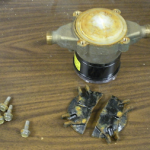 If you take off the frost plate by unscrewing the connectors, you will find a plastic cap as shown in this photo. This plastic cap is designed to bend and transfer the pressure from the frozen water to the frost plate.
If you take off the frost plate by unscrewing the connectors, you will find a plastic cap as shown in this photo. This plastic cap is designed to bend and transfer the pressure from the frozen water to the frost plate.
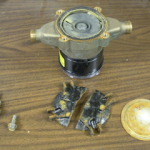
Removing the plastic disc reveals another plastic component. By looking closely, you can also see the gasket that lies between the meter and the plastic disc. 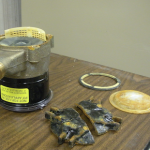
In order to remove this black plastic piece, you need to pull up on a white, plastic screen lying inside the meter between this black piece and the inlet of the meter. This photo shows the screen partially removed.
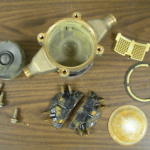 In these next two photos, I have removed all of the internal parts and laid them out. Remember, don’t try this at home! In the one photo, you can see a small portion of the chamber inside the black plastic piece.
In these next two photos, I have removed all of the internal parts and laid them out. Remember, don’t try this at home! In the one photo, you can see a small portion of the chamber inside the black plastic piece. 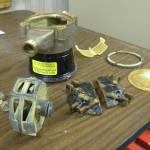 This is where the water flows causing a disc inside to move, or “nutate.†This movement causes the magnet (the small disc attached to the black, plastic piece on the right side) to register the measurement with the reading device attached to the top of the meter.
This is where the water flows causing a disc inside to move, or “nutate.†This movement causes the magnet (the small disc attached to the black, plastic piece on the right side) to register the measurement with the reading device attached to the top of the meter.
And just to be sure I had the whole thing torn apart, I opened up the black plastic piece. Here you can see the little disc still lying inside the piece on the right. 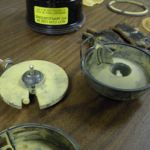 The piece on the left rotates or nutates along this disc. This movement is actually what is used to measure the amount of water flowing through the meter.
The piece on the left rotates or nutates along this disc. This movement is actually what is used to measure the amount of water flowing through the meter.
So what is the point of all this, other than I got to tear apart a meter? Well, I learned about the frost plate and its purpose. I also learned that if the frost plate breaks as designed, and all these internal parts appear to be ok, then we can just purchase a frost plate and put the meter back together. We could also just purchase the internal parts and a new frost plate, then put the meter back together. Both options are cheaper than buying a whole new meter. However, if the meter base breaks instead of the frost plate, this is a defect in the manufacturing process, and we can get a new and free meter from the supplier.
But the bottom line is to try to prevent the meter from freezing in the first place. This can be done by making sure the area around the meter is adequately heated. If this is not possible, then heat tape can be installed on the piping and meter or in conjunction with insulation around the meter.
